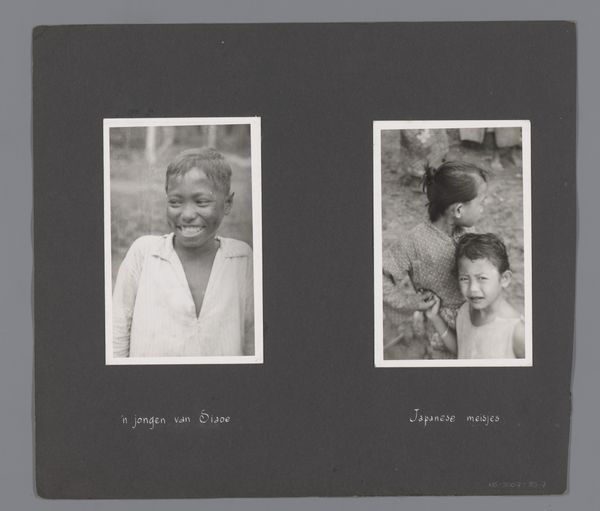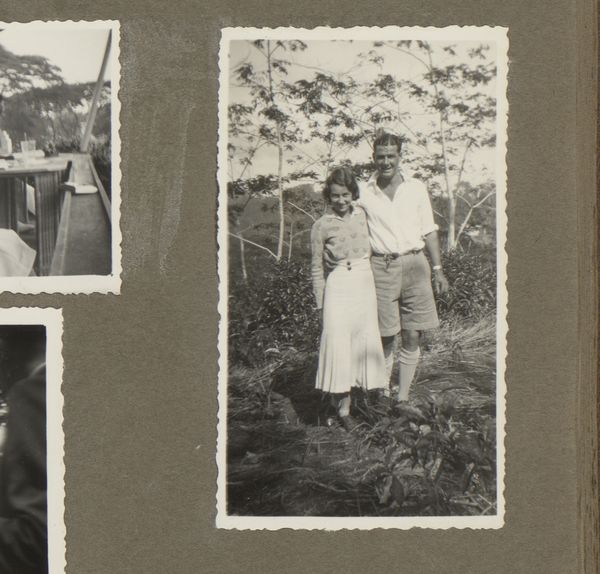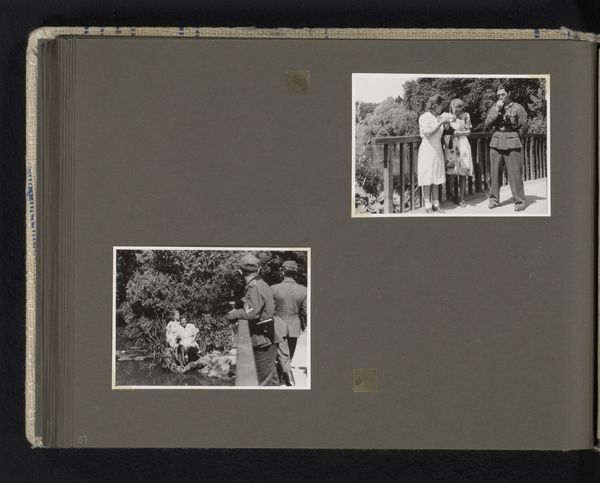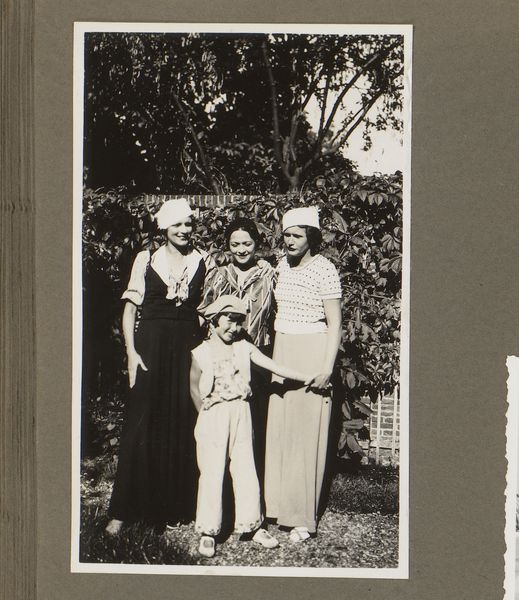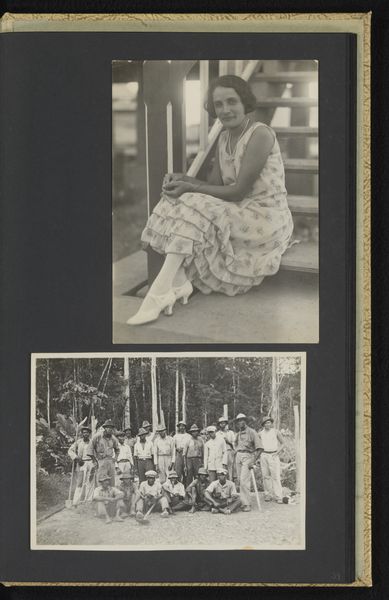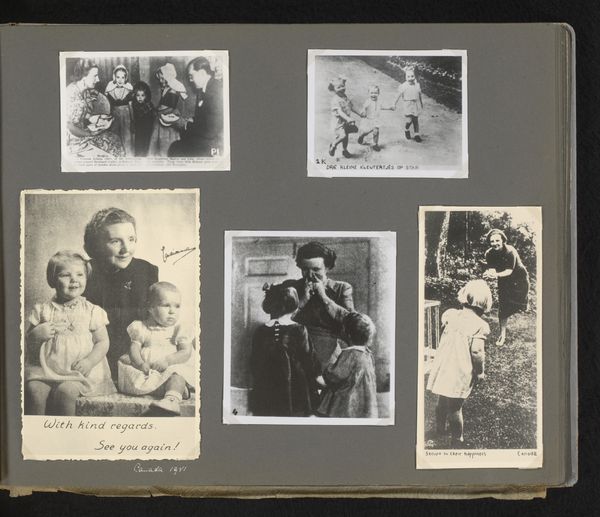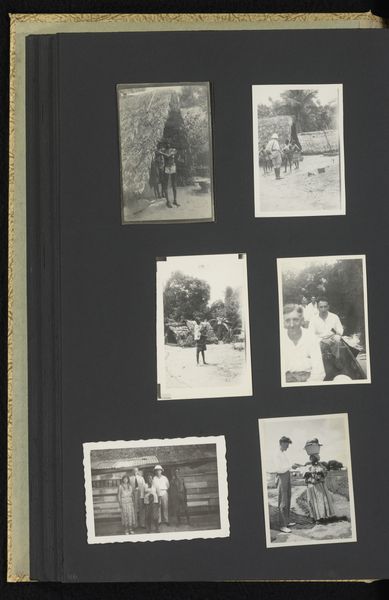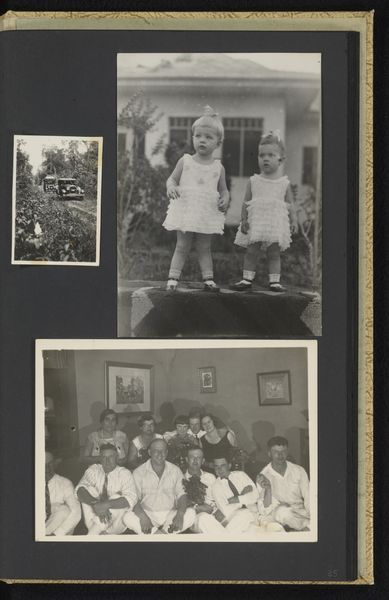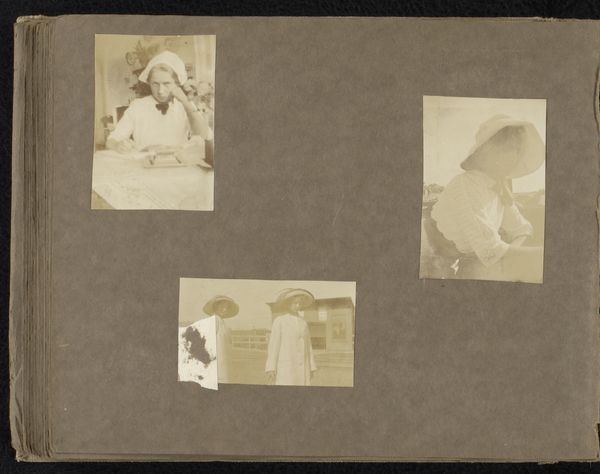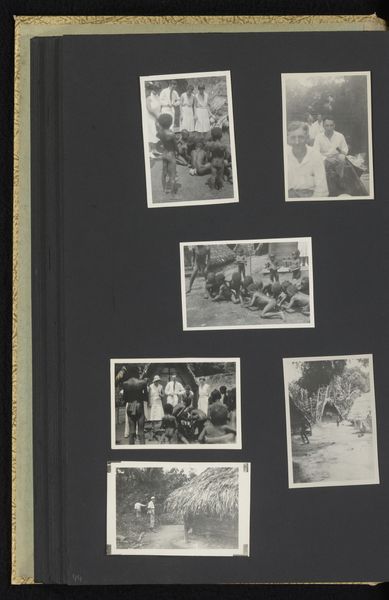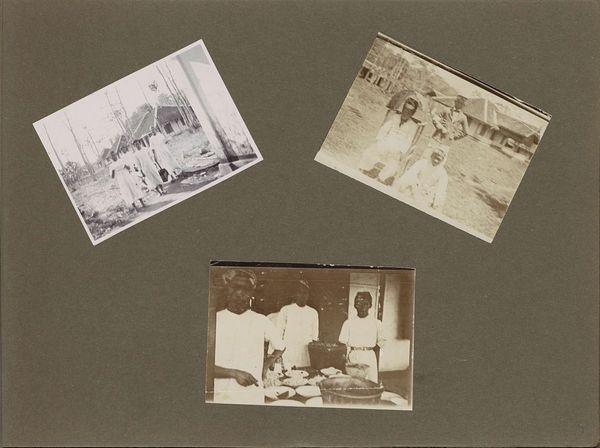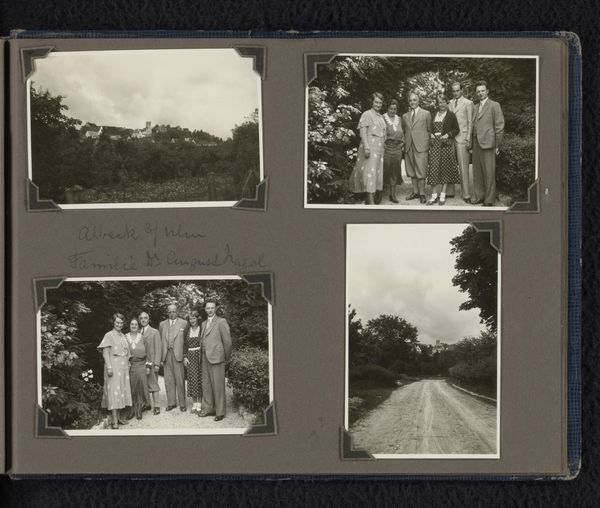
Dimensions: height 266 mm, width 305 mm
Copyright: Rijks Museum: Open Domain
Curator: Here we have a gelatin silver print from the 1930s entitled "Eiland-bewoners," capturing portraits of island inhabitants. I’m struck by its documentary style. What do you notice first? Editor: The contrast. The severe monochrome flattens the space, and I can’t help but think about the hands that developed the photograph and the socio-political circumstances they were in. There are two portraits included, a close-up of a smiling woman, and a larger, group shot. Curator: The photograph really hinges on that opposition you noticed; the bright singular figure isolated versus the shadowed density of the assembled island community. There’s also a kind of flattening effect. It’s an intimate portrait of a woman presented alongside the communal portrait of the island’s social structure. Editor: Absolutely, and those social structures were, undoubtedly, impacted by colonial forces. Looking at the clothing, one has to wonder about the textile production, and the global exchange of goods in the early 20th century. Was the cloth locally sourced, or was it imported? That speaks volumes about the community's economy. Curator: A provocative consideration. The work, as an object, invites reflection upon how the very material conditions of image-making become implicated within broader social relationships. Its realism invites us to probe for deeper contextual significance. Editor: And let's not forget the photographer’s labor. Why did they take these pictures? For whom were they intended? It's easy to get lost in formal aesthetics and lose sight of these power dynamics. Curator: Perhaps. Still, I think that its aesthetic arrangement asks us to also interpret the visible structures and signs to unearth meaning. The tension between light and dark, figure and ground are all at play. Editor: For me, I always ask "Who benefits?" Whose narrative is privileged in this portrayal of island life, especially given its original moment of production and consumption? Curator: Ultimately, the strength of "Eiland-bewoners" resides in how its formal design opens paths for contextual inquiry. Editor: I see this photograph less as an isolated object, and more as a material artifact shaped by broader political currents and the specific choices involved in its making.
Comments
No comments
Be the first to comment and join the conversation on the ultimate creative platform.
